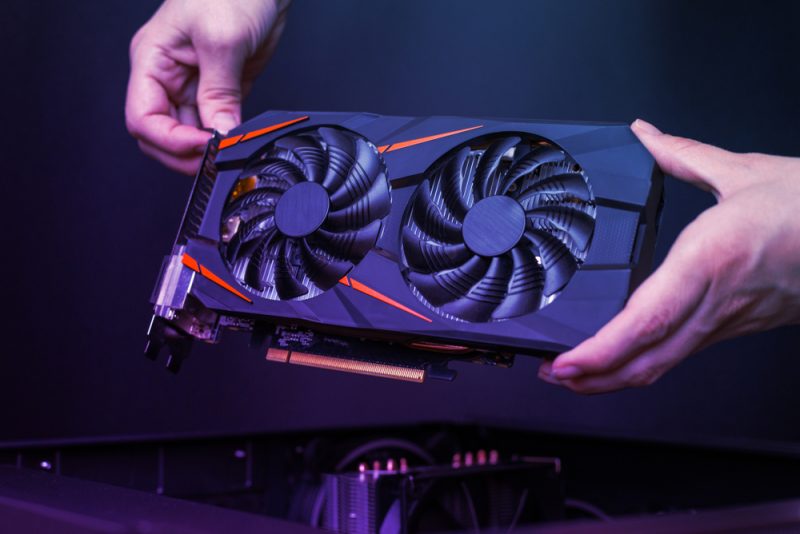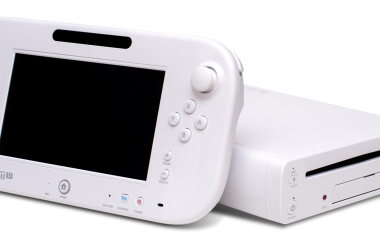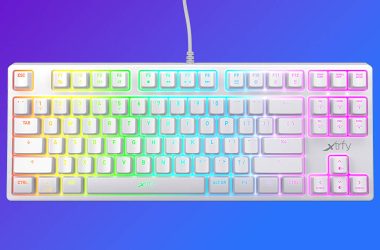Table of Contents Show
If you’re just getting into PC gaming, there’s a good chance you’ve heard of two companies almost above all else: AMD and Nvidia. These are the two major graphics card manufacturers in the PC gaming world; it’s fair to say they’ve got the same kind of duopoly over the market as Google and Apple have over the mobile world. If you’re building a PC – or even if you’re ordering a custom-built one – you’ve almost certainly had to deliberate on whether you want an AMD card or an Nvidia option.
The truth of the matter is that both AMD and Nvidia make excellent graphics cards, and that if you’re going to make the leap into the world of PC gaming, either one of them would be fine for your setup. However, they’re not entirely created equal, and there are some key differences between the architecture of both cards that could inform your decision. We can’t say whether AMD or Nvidia make “better” cards, but here are just some of the differences between them to help you on your way.
Nvidia is best for ray tracing
The next major innovation in the graphics tech world is ray tracing, which was introduced in Nvidia’s last-gen RTX 20 series and refined further in the current-gen RTX 30 lineup. AMD’s new RX 6 range natively supports ray tracing on a hardware basis, but if you want the best out of your ray tracing-enabled games, you’re going to want to go with Nvidia, which has had more time to perfect its approach to this tech. AMD cards often run ray tracing games at a lower frame rate than Nvidia’s cards do, so if ray tracing is important to you, Nvidia is the option you should plump for.
AMD makes better budget cards
Right now, the Radeon RX 6600 XT is pretty much the best budget card on the market. While its price tag might be stretching the definition of “budget” somewhat – it usually retails for around £450, after all, which for many people is the price of a full machine – if you’re putting a reasonable PC together, you should expect to spend around this much on a dedicated GPU. The RX 6600 is excellent for 1080p and 1440p gaming, and Nvidia’s nearest competitor, the GTX 1660, just gets outperformed by AMD’s Radeon card in most areas.
Some games are optimised for either manufacturer
You’ll sometimes see AMD or Nvidia splash screens at the beginning of games. These screens indicate that the game was built for, and optimised for, that particular graphics tech. This doesn’t mean you can’t run an Nvidia-optimised game on an AMD card, of course, but it does mean that you’re going to get the best results in terms of frame rate and performance if you play on the card for which the game was optimised. Generally speaking, more games are optimised for Nvidia hardware, making Nvidia a slightly better choice for overall gaming.
Nvidia cards are better for non-gaming usage
Nvidia’s higher-end options – the RTX 3090 or Quadro cards, for example – are perfect for industrial or professional work such as CAD or film editing. Nvidia also makes lower-cost Quadro cards that are perfect for CAD work, while AMD’s offerings in this area leave a lot to be desired. If you’re going to be using your graphics card for purposes other than gaming, then it’s probably best to plump for Nvidia, because they’re much more well-equipped in this area.
High-end AMD cards tend to be cheaper
At the time of writing, if you want to pick up a high-end Nvidia card, you’re going to be paying serious dollar for it. AMD’s RX 6900 retails for around £2,000, which sounds like a lot until you realise that the RTX 3090 can often go for about £400-£500 more than this. Of course, the performance is pretty comparable between cards, so AMD’s option works out at slightly better bang for your buck. However, the difference is really felt in the low-to-mid tier of graphics card tech; AMD’s options in these price brackets simply outshine Nvidia’s in almost every way.
Ray tracing is still in its infancy
High-end Nvidia cards emphasise their compatibility with ray tracing, but in all honesty, there still isn’t a game that uses ray tracing in a way that justifies the eye-watering price point of Nvidia’s best cards. While games like Cyberpunk 2077 do benefit immensely from the visual boost given to them by ray tracing, the performance hit is far from worth it; you’ll often see a 30-40fps drop if you enable ray tracing, and it doesn’t make enough of a difference for this to be worth it. With that in mind, AMD’s offerings become much more appealing, given that they aren’t particularly good cards for ray tracing (yet).
Nvidia’s DirectX API is more widely optimised than Vulkan
AMD cards use the Vulkan API, while Nvidia cards prefer DirectX. If you don’t know what an API is, think of it as a piece of software that renders and displays 3D graphics. It’s more complicated than that, of course, but we’re not software engineers, so we’ll leave it there. More games use Nvidia’s DirectX standard than Vulkan, and although you’ll be fine with either, DirectX provides a more universal gaming experience. With that being the case – and with many games being optimised for Nvidia tech – Nvidia is the more mainstream choice for gamers.
We know this might not have cleared up your questions, but the fact is that there really is no one “superior” choice for gaming. If you want the most universal and simple gaming experience, we suggest plumping for an Nvidia card, but if you have less money to spend and don’t mind weaker ray tracing, AMD makes some seriously attractive graphics card options.









